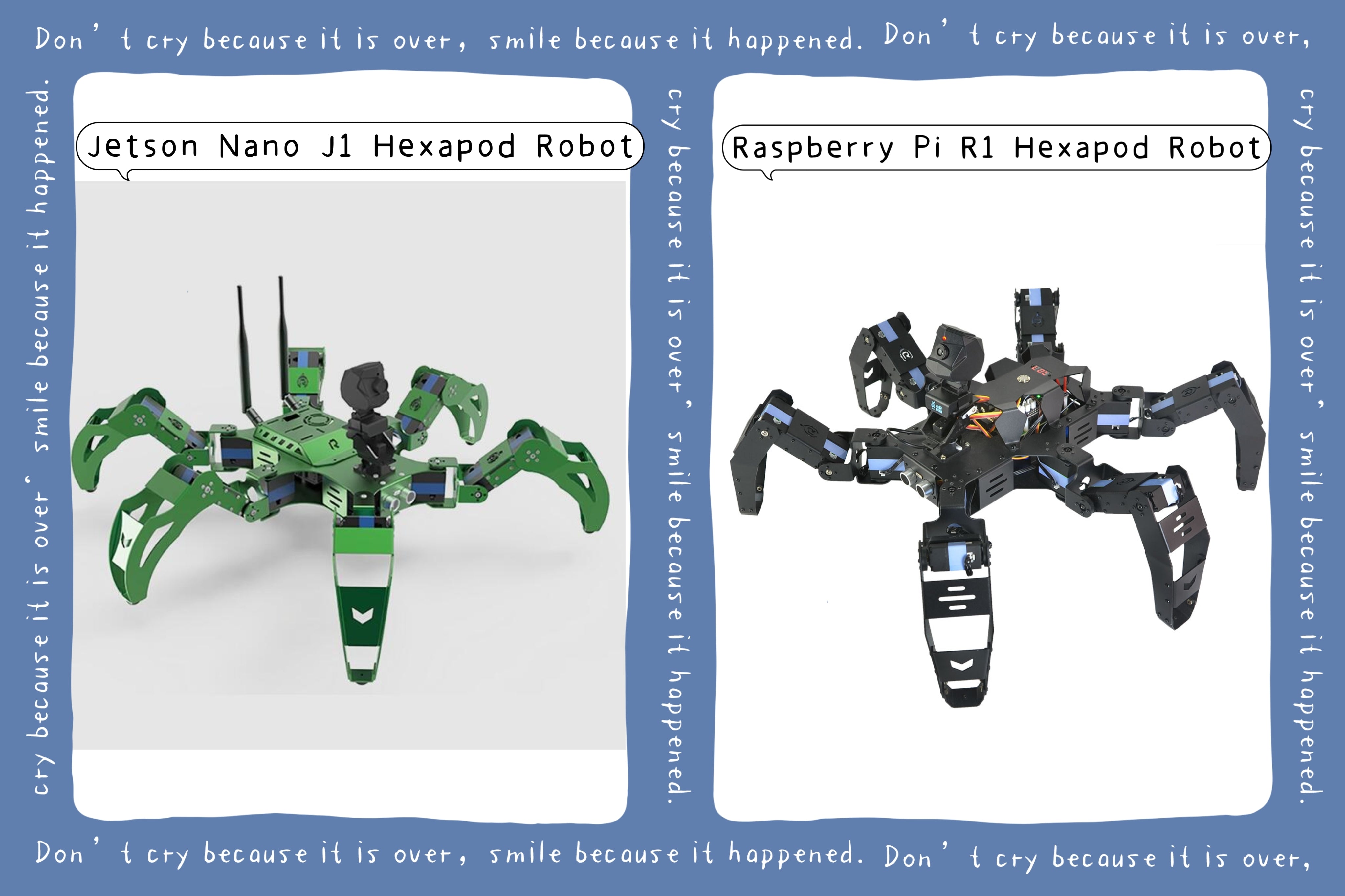News

Raspberry Pi Bionic Hexapod and Jetson Nano Hexapod: Technical Differences and Application Considerations
Raspberry Pi Bionic R1 Hexapod Robot
Raspberry Pi Bionic Hexapod is suitable for application scenarios that have high requirements for real-time and stability, but low requirements for AI functions. For example, tasks such as environmental monitoring and terrain exploration can be achieved with Raspberry Pi Bionic Hexapod.
Jetson Nano Bionic J1 Hexapod Robot
Jetson Nano Hexapod is more suitable for application scenarios that require high-performance computing and AI functions. For example, in tasks such as autonomous navigation, obstacle detection, and target recognition, Jetson Nano Hexapod can exert its powerful AI computing capabilities to achieve a higher level of intelligence.
Raspberry Pi Bionic Hexapod is suitable for application scenarios that have high requirements for real-time and stability, but low requirements for AI functions. For example, tasks such as environmental monitoring and terrain exploration can be achieved with Raspberry Pi Bionic Hexapod.
Jetson Nano Bionic J1 Hexapod Robot
Jetson Nano Hexapod is more suitable for application scenarios that require high-performance computing and AI functions. For example, in tasks such as autonomous navigation, obstacle detection, and target recognition, Jetson Nano Hexapod can exert its powerful AI computing capabilities to achieve a higher level of intelligence.

ESP32 hexapod bionic robot and Raspberry Pi hexapod bionic robot: differences and comparison
ESP32 and Raspberry Pi are two different microcontrollers, each with different characteristics and advantages on the hardware platform. ESP32 is a low-power microcontroller with integrated Wi-Fi and Bluetooth functions, with a dual-core processor and rich peripheral interfaces, suitable for the Internet of Things, smart home, industrial control and other fields. Raspberry Pi is a microcomputer motherboard based on ARM architecture, with powerful computing power and rich expansion interfaces, often used in education, scientific research, development and other fields.
